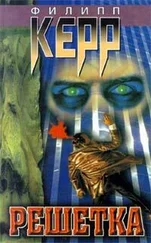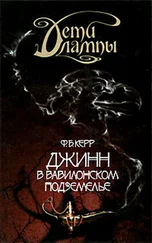There have been a number of theories as to what caused the relatively benign B19 virus to mutate and become the much more deadly fast HPV1. An increasingly popular theory suggests that an attempt to genetically engineer an antivirus capsid with recombinant DNA technology using a baculovirus system was responsible. Other theories suggest that shortage of blood in Russian hospitals during the early twenty-first century helped encourage their traditional practice of using cadaver blood for infusion, and that B19-infected blood taken from the bodies of people who had been affected by radiation from the Shevchenko [22] The Shevchenko nuclear reactor complex on the Mangyshlak Peninsula in Kazakhstan was the world’s worst nuclear accident; as a result of the explosion, an area of some two hundred square miles between the Caspian and Aral Seas was rendered uninhabitable.
disaster of 2011 had mutated to the new form of parvovirus. There has even been the ‘panspermia’ theory, which says B19 met with another virus that had recently arrived from outer space, as detritus from a comet or from a space shuttle. These are only a few of the theories in circulation. What seems certain, however, is that the development of blood substitutes played a significant role in the mutation of B19. Military interest in new battlefield resuscitation solutions that would avoid the logistical problems of whole blood resulted in the creation of a number of products that were reliant on purified bovine hemoglobin, or on bacterial recombinant technology that had used the E. coli organism as a method of expressing human hemoglobin.
Whatever the chain of causation, there can be no argument as to the deadly effect of fast HPV1, which is to eradicate the function of the oxygen-binding site of hemoglobin [23] Oxygen is carried in the body from the lungs to the tissues by the specialized protein hemoglobin. This is a complex structure, carried around in the blood by the red cells in high concentration. It has the special property of binding oxygen in the lungs but releasing it in the low-oxygen environment of the tissues, whereupon its function changes to enable the uptake of large amounts of carbon dioxide, which is transported to the lungs, and the reverse process takes place. That this can happen is due to the unique structure of hemoglobin, which is a complex of two pairs of protein molecules that are known as alpha and beta chains. These are arranged in close juxtaposition and provide the supporting structure for the active part of hemoglobin, the heme molecule, a porphyrin structure containing iron. It is within this component that oxygen is bound. A remarkable physical change occurs during the cycle of uptake and release of oxygen, which has been likened to the hemoglobin molecule breathing.
in otherwise normal people, although there still remains much debate as to how the virus works. Fast HPV1 seems to operate in a choice of three different ways, leading many doctors to believe that fast HPV1 is actually three kinds of parvovirus. These are:
1. the virus causes the defective production of proteins critical for the function of the oxygen-binding site; or
2. the virus turns off the production of such a protein. Oxygen then cannot be transferred by the red cells thus affected; since the lifespan of red cells is one hundred and twenty days, the patient suffocates within this time frame; or
3. codes for the production of blocking polypeptide interact with the active site of oxygen binding.
The second method of operation represents the commonest scenario with fast HPV1. The clinical picture starts slowly with individuals symptom-free for some seven days between the minor febrile period and the appearance of a rubelliform rash; this is followed at four weeks by the sudden onset of symmetrical arthritis affecting the small joints of the hands, followed by wrists, ankles, knees, and elbows; by day sixty patients present symptoms of worsening anemia — fatigue, shortness of breath, cyanosis, confusion; and depending on the general fitness of the patient, fast HPV1 will result in coma and then death by approximately day ninety.
The treatment for fast HPV1 was blood transfusion and the therapeutic use of ProTryptol 14, a specific protease carried in a lipid envelope (or liposome) to prevent premature digestion and targeted at red blood cells. The protease, once released inside the red cell, was designed to act against the mutant protein causing upset at the oxygen-binding site. For many years, however, this formulation was difficult and expensive to produce, and by the time the cost of ProTryptol 14 had come down, the price of whole blood had skyrocketed.
Fast HPV1 was worldwide in distribution and occurred in all populations with the exception of some isolated groups in Brazil and Africa. As with B19, children were the first to be infected, with outbreaks often centered on primary schools, spreading from respiratory tract to respiratory tract. During these first outbreaks, which were always fatal, the parents and teachers of cases also became infected, which led to a second mode of transmission: blood donation. It was the resulting high incidence of virus found in donated units of blood that led to a crisis of confidence in blood donation throughout the Western world, and led also to the widespread creation of autologous blood donation programs. The term ‘bad blood’ has been in use for many centuries, as a way of describing ill-feeling between two people, but never before could this be justified from a physiological viewpoint.
Between 2017 and 2023, fast HPV1 was killing as many as fifty thousand people a day worldwide. Accompanied by a series of natural disasters, from the earthquake that destroyed Tokyo, to the plague of locusts that decimated American agriculture, the Great Middle Eastern War of 2017, and a major eruption of Mount Vesuvius in Italy — not to mention the climatic change that brought a disastrous drought and famine to China — the HPV pandemic was quickly seen by many as a punishment from God. Others blamed the jews, and on the usual tenuous evidence: It had been a Jewish doctor, Benjamin Steinart-Levy, who pioneered ProTryptol 14, which enabled the Goldman Pharmaceutical Company to make billions of dollars during the first months of the pandemic. Pogroms began all over the world, but especially in America; in Los Angeles alone, fourteen thousand Jews were murdered. In New York, when no more bodies could be buried in the city’s cemeteries and parks, Cardinal Martin Walsh blessed the Atlantic so that corpses dumped into the sea would have a consecrated home. Throughout the world, families disintegrated, health-care systems broke under the strain, and countries fell into chaos as governments all but collapsed.
It is impossible to give precise figures, but even the most conservative statisticians have estimated that fast HPV1 resulted in the deaths of as many as one hundred and fifty million people between 2018 and 2025. Many more would have died if it hadn’t been for the fact that another mutation took place sometime during the mid-2020s, when fast HPV1, which killed people within one hundred and twenty days, became slow HPV2, or P2, which took much longer to kill its host. [24] Similarly the particularly virulent form of syphilis that struck Europe during the late fifteenth century may have mutated to a less immediately severe form that subsequently existed, with fewer ugly pustules and less pain. The dramatist Oscar Wilde lived with syphilis for many years longer than would have seemed possible in 1495, when King Charles VIII of France sacked Naples, and his syphilis-ridden troops set in motion a new venereal plague.
Of course, this was in the virus’s own interest: A virus stays alive only if it creates proteins, usually by hijacking the processes of the host cell. If a virus multiplies without resistance, it kills the host, and if that happens before the virus can find another host, the virus will also die. P2 evolved to take account of this, allowing the host cell to survive for many years (today the victims of P2 can live for as long as ten to fifteen years), remaining latent in the DNA of the host cell nucleus for long periods and reactivating when the host’s defenses are low.
Читать дальше












